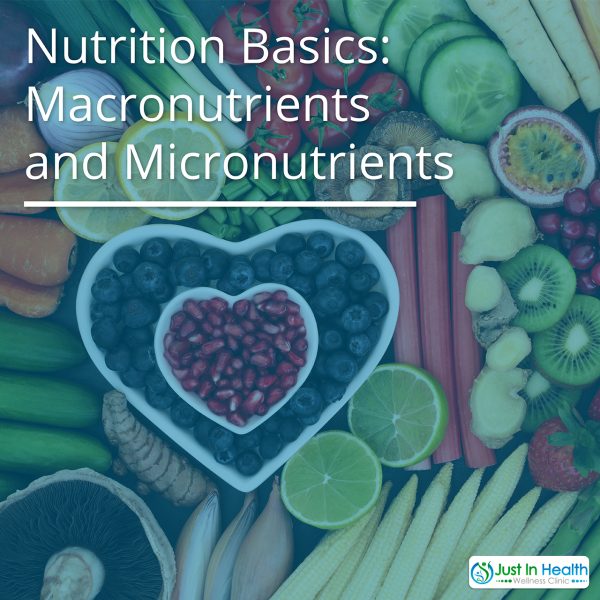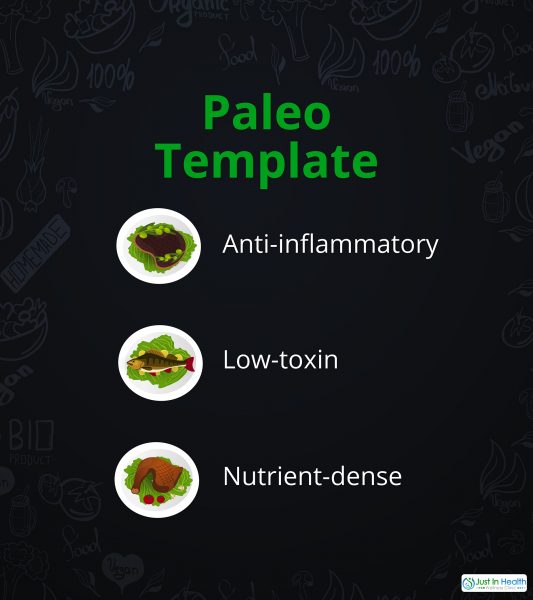

By Dr. Justin Marchegiani
In today’s Nutrition 101, discover what micronutrients and macronutrients are, and learn how to customize your diet to suit your individual needs and goals.
The basic template for a healthy diet is exemplified by the paleo diet: high in fresh vegetables, healthy fats, and high-quality meats. In the paleosphere, or in any diet, you can go high-carb/low-carb, high-fat/low-fat, high-protein/low-protein. These are “macronutrients,” and your ratios will vary depending on your body and your goals. What we want to focus on are getting in lots of nutrient-dense, low toxin, and anti-inflammatory foods. From there, we can play around with macronutrients.
In the 50’s and 60’s, fat was demonized because it packs a higher-calorie punch, and was measurable in blood cholesterol. We have since learned that not only is fat not bad for you- it’s actually very good for you! (So long as you are eating healthy fats).
Let’s look at the different hormonal effects of the different macronutrients.
Click here for a customized diet plan and work 1-on-1 with a nutrition professional!

Carbohydrates raise insulin more than any other macronutrient. So based on endocrinology, it is carbs that are driving fat gain. Insulin resistance is becoming increasingly common, and a large factor in the obesity epidemic.
Non-starchy carbs come mainly from vegetables. Non-starchy carbs are low in sugar, high in nutrition. Broccoli, kale, spinach, asparagus, carrots…
Starchy can be nutritious but are generally higher in carbohydrates. Sweet potato, yam, jicama, a starchy tuber, squash, etc.
There are low-sugar, lower carb fruits. These include strawberries, raspberries, passion fruit, lemon, lime, & grapefruit.
Tropical fruits like papayas, mangoes, watermelon, bananas, and pineapple are higher in sugar and in carbs.
Glycemic Index
Why separate low and high sugar fruits? Fruit is primarily fructose. Sugar creates insulin resistance, and while fructose is milder, it can still create insulin resistance. So when dealing with fruit, or any sugary carbs, it’s important to take into consideration the glycemic index.
Protein primarily comes from two sources: animals and we have plants. Animal protein will include fat unless you’re going for super lean cuts. The carbs in animal protein (i.e. meat) are virtually zero.
Plant protein (not including low-carb plant-based protein powders) includes a lot more carbohydrates. Typically two-thirds to seventy-five percent of the bulk of that item will be carbohydrate. For example, rice and beans are about 15‑18 grams of protein to about 60-70 grams of carbohydrate.
So as you can see, animal protein is a superior source of protein. It’s much more protein-dense, and it is much higher in sulfur-based amino acids. Amino acids help run glutathione pathways, which is a natural antioxidant.
The third macronutrient is fat, which can be broken up into subcategories. Mainly:
Monounsaturated fats: Good fat from avocados, olives, olive oil.
Polyunsaturated fats: There are better and worse types of polyunsaturated fats. Good sources include the omega-3s from fish. It’s best to avoid high omega-6 sources, like from corn and soy (foods you probably want to be avoiding anyways!).
Saturated fats: These had a bad rap, but are actually pretty excellent. Saturated fat primarily comes from animal sources, with the exception of coconut oil. Butter, tallow, bacon lard, as well as the fat you get when you eat meat and seafood. These are important to include in your diet!
Depending on your body composition, lifestyle, and goals, we can dial the carbs up and down. More carbs for those doing high-intensity workouts like CrossFit or triathlons. We can up the starchy and possibly the non-starchy if we have insulin resistance. If weight loss is the goal, we will go low carb, getting our carbohydrates just from green vegetables.
There are three criteria the foods we eat need to meet:
If we’re eating foods that are driving inflammation, it’s going to cause our body to break down excessively fast, create pain, and put stress on our adrenal glands. Those are not good since that is going to break our body down faster.
Next, the foods have to be nutrient-dense. This is very important. Outside of macronutrients, we have micronutrients–vitamins, minerals, water. We have to make sure the foods we’re eating are nutrient-dense.
You’ll notice that one of the food categories I did not talk about are grains, and that’s because grains are very nutrient-poor. And then when you actually factor in gut irritation, lectins, phytate, oxalic acids (which can actually steal nutrients you’ve gotten from other foods!), grains are even more nutrient-poor and very inflammatory.
This is important, because even if you’re having some healthy broccoli- if it was grown with a bunch of pesticides, you’re eating all those toxins. Looking at quality is so important because you can eat the same macronutrient ratio, but if the foods you eat have carcinogenic pesticides, it can put stress on the body, stress on the liver, and disrupt your health.
Our macronutrient ratio can change depending on where we are in life, but getting high-quality food, rich in micronutrients, is something that should always remain a priority. If you’re doing that right, then the macros can be adjusted at any time. If you’re having trouble dialing in your macros or knowing which foods are best for you, schedule a consult today!
Click here for a customized diet plan and work 1-on-1 with a nutrition professional!